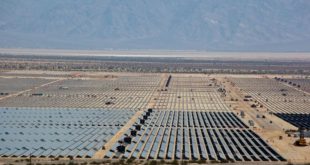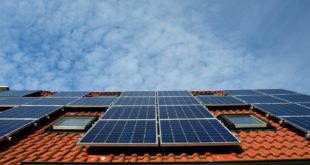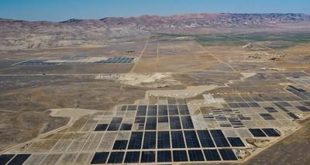New report forecasts global module prices by country and
provides detailed market outlook for suppliers
This year, the solar PV supply chain began to stabilize due to robust demand growth, capacity retirements and mothballing by uncompetitive firms, trade conflicts, and a general focus by suppliers on margins over sales growth. According to a new report by GTM Research, PV Pricing Outlook 2014: Value Chain Trends, Global Drivers and Regional Dynamics, global PV prices will increase nine percent next year as Japan, China and the U.S continue to support the end market.
In the report, GTM Research breaks pricing down by both material and geography. Blended polysilicon prices will increase the most
dramatically at 25 percent next year. Wafer prices will increase 11 percent and cell prices 5 percent. Yet overall module prices will fall
1 percent, driven significantly by geographic variation.
FIGURE: Delivered China Tier-1 Module Pricing by Region, Q4 2013
“Looking at a single module price to represent the global market no longer makes sense,” says report author and GTM Research Analyst Jade Jones. “Regional drivers such as import tariffs, incentive levels and technology preference are changing pricing dynamics. The difference between pricing between India and Japan, for example, is almost 30% at present, and we expect regional pricing spreads to persist through 2014.”
The 60-page report contains current, near-term and long-term pricing forecasts for PV polysilicon, wafers, cells and modules across multiple scenarios and market outcomes. Additionally it identifies key pricing drivers such as supply-demand balance, supplier costs, and geopolitical factors and examines their influence on global and regional pricing trends.
Looking into 2015 and beyond, GTM Research sees module pricing resuming its long downward trajectory, eventually dropping below 50 cents per watt for tier-1 Chinese modules in GTM Research’s base forecast. “While we expect pricing to be stable to up in 2014, there are a number of factors at play which we believe will continue to exert downward pressure on pricing in 2015 and beyond, including manufacturing cost reductions, end-market underperformance, and a generally declining incentive environment that will place pressure on PV system economics”, says GTM Research Senior Analyst Shyam Mehta. “While there certainly is risk to our view in both directions, we are comfortable in our view that low-cost markets such as India, Chile and China will see module pricing of less than 50 cents per watt by 2017”, he added.
FIGURE: Delivered Global Blended Tier 1 China Module Price, Q4 2012-Q4 2017E
For more information on the PV Pricing Outlook 2014: Value Chain Trends, Global Drivers and Regional Dynamics report, please visit
http://www.greentechmedia.com/
 Alternative Energy HQ solar power for homes, wind energy, and bio fuel issues
Alternative Energy HQ solar power for homes, wind energy, and bio fuel issues



 Global
Global 




